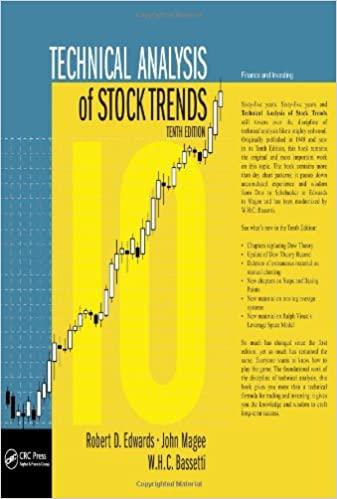Question
Wally loves your analysis. He has now asked you to evaluate potential new project investments. Both projects aim to make widgets. Widgets sell for $10
Wally loves your analysis. He has now asked you to evaluate potential new project investments. Both projects aim to make widgets. Widgets sell for $10 each. Project A will produce 4,500 units in the first year, 6,500 units in the second and third years and a whopping 44,000 units in the fourth year. Project A requires an investment of 3 machines each costing $25,000. Project B will produce 2,400 units in the first year, 2,200 units in the second year, 1,950 units in the third year and 1,460 units in the fourth year. Project B requires an initial investment of 1 machine worth $25,000. Wally has said that to make the analysis easier you need not calculate depreciation on the machine, the tax shelter benefit or the residual value of the machine at the end of production. Wally just said I want you understand the cash flows from the information provided above.
(a) Calculate the net present value for each of Project A and Project B, assuming a 15% cost of capital. (10 marks)
(b) What is the IRR of each project? (4 marks)
(c) What is the payback period of each project? (2 marks)
(d) What is the discounted payback period for each project (2 marks)
(e) If the required rate of return for each project were 10%, would you accept project A, project B, both projects or neither project? (2 marks)
(f) If you had to choose between these projects, which would you choose? Why? (2 marks)
(g) If the projects were able to produce more widgets with no additional investment what would this do to the NPV, IRR, payback and discounted payback periods? You need not calculate all values (though you can if you wish). You could simply indicate which of these items would improve, worsen or remain largely unaffected. (4 marks)
(h) If the initial investment required for both projects were to be cut in half, what impact would this have on the NPV, IRR, payback and discounted payback period? You need not re-calculate all values. Just indicate if these items would improve, worsen or be largely unaffected (4 marks).
Step by Step Solution
There are 3 Steps involved in it
Step: 1

Get Instant Access to Expert-Tailored Solutions
See step-by-step solutions with expert insights and AI powered tools for academic success
Step: 2

Step: 3

Ace Your Homework with AI
Get the answers you need in no time with our AI-driven, step-by-step assistance
Get Started


